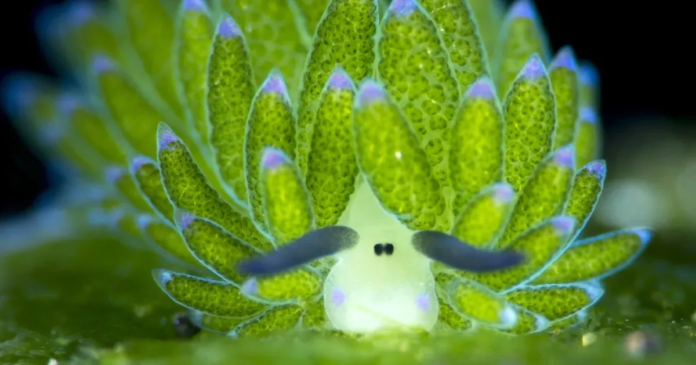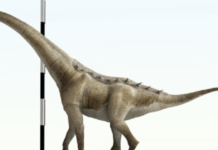By Sophia Byl
Picture the following: you, like any sensible human, enjoy a good risotto. One faithful day, you flavor your arborio rice with some interesting new herbs before enjoying the meal. It tastes a little strange, but you dismiss the thought and continue to dig in.
The next day is record-breakingly hot, and temperatures are only rising. You step outside, expecting to be struck by a disgusting wave of heat, but the intense sun actually feels pleasant. Energizing, in fact. Something on your arm catches your eye – freckles unlike any you’ve ever seen. A deep green, they oddly resemble the herby seasoning you added to your risotto just the day before. Could this be the source of your newfound energy?
The idea of a human performing photosynthesis is, unfortunately, fictional. Our cells don’t have chloroplasts, and even if they did, we simply require too much energy for a photosynthetic life to be practical. For some herbivores, though, the algae they eat leave behind their precious chloroplasts once consumed. This allows said herbivore to conduct the majestical double life of photosynthesis and eating other organisms.
The art of storing away consumed chloroplasts for personal use is known as kleptoplasty, with klepto- coming from Greek, meaning “to steal”. Chloroplast stealing is quite the accurate description, as no other part of the algae consumed by the organism is kept. This includes the nucleus, interestingly enough, since typically it is required to support all the vital processes going on in cells.
One of the cutest organisms wanted for the crime of kleptoplasty is the leaf sheep sea slug. Having captured the hearts of many marine biologists, it has been affectionately nicknamed “Shaun the Sheep”. Leaf sheep typically populate the oceans surrounding East and Southeast Asia, though any tropical environment with an abundance of seaweed and algae works. The sea slug will rob their food source of chloroplasts, turning a vibrant green in the process and gaining the ability to perform photosynthesis by puppeting those stolen chloroplasts.
An extra energy source is only one of many benefits that the leaf sheep gains through kleptoplasty. The green pigment provides a convenient source of camouflage for the slug in areas where underwater vegetation is plentiful. The algae also provides the leaf sheep with some less visible protection – a chemical defense system. A joint study between UNC Chapel Hill’s Institute of Marine Sciences and UC San Diego’s Scripps Institution of Oceanography found that a chemical known as avrainvilleol is also transferred to the slug during kleptoplasty. The leaf sheep shared a tank with some predatory fish, who were met with an unpleasant surprise whenever they tried to eat one of the slugs. In the end, all the slugs remained safe due to their poisonous defenses. Another win for Shaun.
The curious relationship between the leaf sheep sea slug and its pillaged chloroplasts can be described as symbiosis, albeit a type where the slug gains a multitude of benefits and the algae’s chloroplasts are simply left stranded in this strange foreign organism. Parasitism? Not quite. Since the chloroplasts reside inside the slug’s body cells, the relationship is known as endosymbiosis.
This concept of endosymbiosis is one that has been the subject of much discussion lately, even leading to the rise of the “endosymbiotic theory”. Scientists have proposed that the mitochondria present in animal and plant cells were once separate organisms entirely, bacteria specifically. The then-bacteria could have entered a eukaryotic cell, at first functioning on its own, but eventually becoming an energy source (obligatory powerhouse mention) for the larger cell. Evidence for this theory includes the fact that mitochondria are the same size as bacteria, and have DNA in the shape of circular plasmids, not a double helix like us.
It’s an intriguing thought, and one that scientists are continuously learning about by observing real-life examples, like through the leaf sheep and its algae. If only that magical risotto was real, and we could experience the wonders of endosymbiosis firsthand. Though, the idea of being solar-powered would likely divide humanity in half. An additional reason to have to spend time outside? Splendid, if you like the outdoors, but for others it’s the worst punishment you can dream up.










